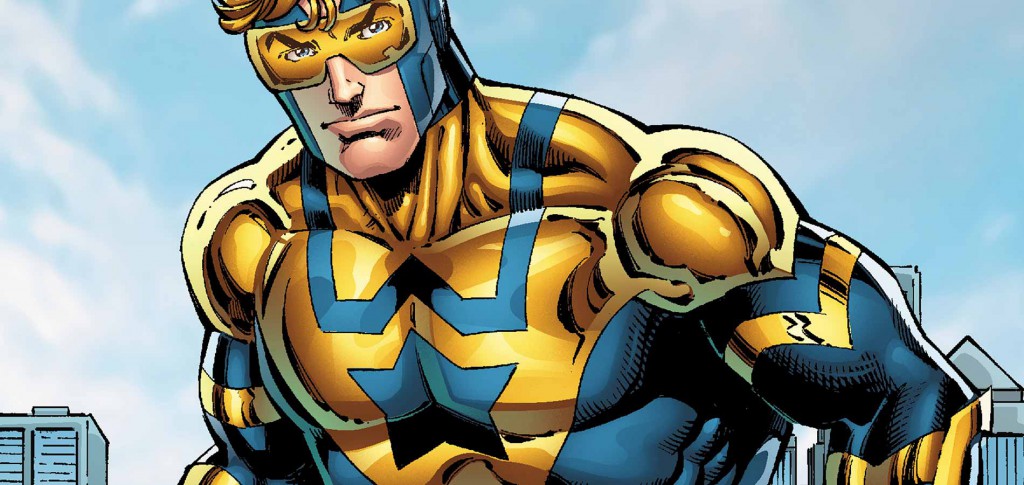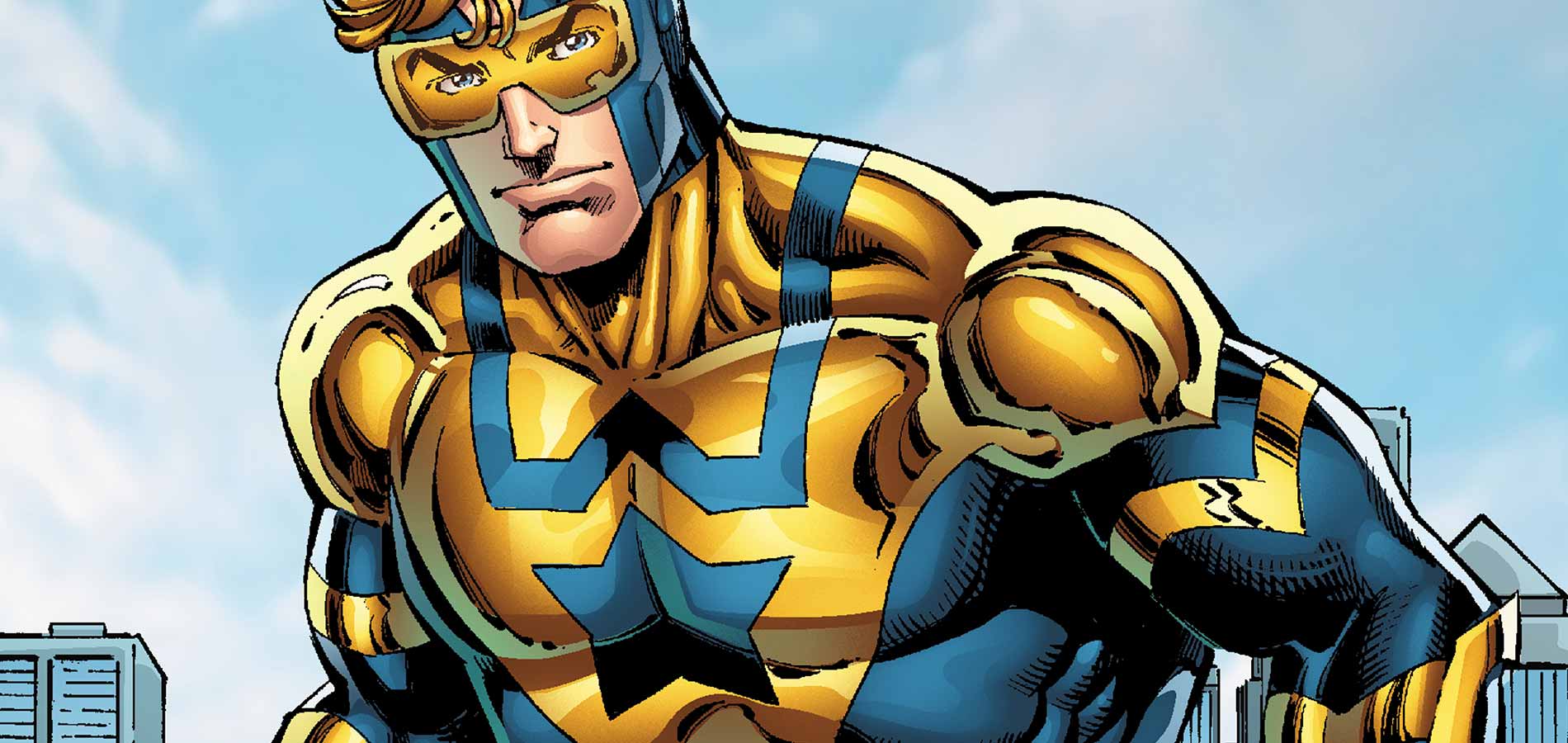Booster Gold: Futures End #1
Written by Dan Jurgens
Art by Moritat, Dan Jurgens, Norm Rapmund, Will Conrad, Steve Lightle, Stephen Thompson, Mark Irwin, Ron Frenz, Scott Hanna, & Brett Booth, Colorist John Kalisz. Cover by Dan Jurgens, Norm Rapmund, & Hi-Fi.
Published by DC Comics
Ever since the cancellation of Justice League International in 2012, Booster Gold has remained an enigmatic figure. The annual which concluded JLI had Booster Gold encounter a future version of himself sporting and A.R.G.U.S. logo before both of them were vanished at the hand of some unseen force. Booster has been completely MIA with the exception of a guest appearance on All-Star Western. After being gone for nearly two years, Booster Gold returns under the pen of his creator, Dan Jurgens.
Unfortunately new readers will likely be turned away confused with more questions than answers unless they have a working knowledge of Booster Gold. The issue reads much better for those who’ve been reading the scant issues about Booster in the New 52 and some of his pre-New 52 solo series where he served as the DCU’s resident Time Lord. The major problem with this issue as well as its greatest selling point is that over all, Booster Gold: Futures End #1 isn’t an issue meant to tell a story as much as it is to heavily foreshadow the larger events to come to the DC Universe as a whole. This makes it difficult to talk without spoilers and what said spoilers imply for the future of the DCnU. As such, you have been warned.
The story follows two versions of Booster Gold, the one from the pages of JLI and All-Star Western as well as the mysterious older one from the JLI annual. Older Booster finds himself caught in a massive time disruption which is shooting him across timelines and dimensions like a human ping pong ball while Young Booster is held in an interrogation room by robots sporting Brainiac’s logo for information only he knows.

Old Booster pops in and out numerous cities and times (1800s Gotham, the 31st century, Hub City, and the world of Kamandi: The Last Boy on Earth) all which seem to have been locked up and the resident super humans’ powers drained. He arrives in the JLI’s headquarters and shares an exchange with Young Booster (though their dialogue isn’t the same from the annual). In Metropolis,he runs into his sister and companion time-traveler Michelle, a.k.a. Gold Star, before they’re pulled into the room where Young Booster is being tortured. It’s here that Old Booster finds something out. He’s not the future version of Young  Booster, but an older version from an alternate universe. Given that Old Booster seems to have a working knowledge of time travel – and is aware of the Multiverse – and worked with Rip Hunter – and has his sister with him – the issue heavily implies that Old Booster is in fact the Booster Gold of the pre-New 52 universe. Now that’s quite the bomb to drop. The old DC Universe may be alive and well after all.
Booster, but an older version from an alternate universe. Given that Old Booster seems to have a working knowledge of time travel – and is aware of the Multiverse – and worked with Rip Hunter – and has his sister with him – the issue heavily implies that Old Booster is in fact the Booster Gold of the pre-New 52 universe. Now that’s quite the bomb to drop. The old DC Universe may be alive and well after all.
The ten artists brought on board for this one-shot are used to emphasize the difference between timelines and universes. Despite the various shifts in style it rarely messes with the narrative, save for when Brett Booth’s work changes over to Dan Jurgens mid-scene. Booster Gold: Futures End #1 serves as a teaser for the upcoming events in both Futures End and the upcoming Earth 2: Worlds End, but at the cost of an actual story. This makes it a very unfriendly book to new readers, especially since Booster will likely not be showing up until some point in one of the two weekly series this one-shot ties into. For old fans, this is a rich treat and teaser for what very well may be the return to the classic DCU.
Grant Raycroft

